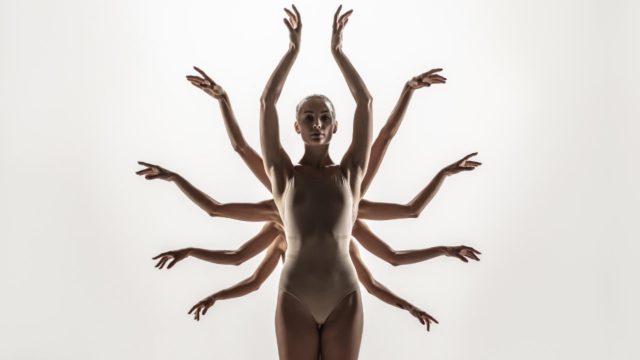The events of 2020 have certainly cast a shadow on the art world, which will undoubtedly go down in history as one of the greatest challenges the industry has ever faced. With galleries closed to public footfall, high real estate fees, exhibitions on pause, and private funding drying up, turnover for galleries has been hit hard by the pandemic.
But it’s not all a bleak picture of despair. Like most businesses throughout this strange, turbulent year, galleries and artists alike have had to adapt and innovate to thrive. In the era of perpetual Zoom meeting fatigue and Amazon shopping addiction, art has been through a similar transition. It’s moved online.
While the art field has been, in the main, slow to adapt to the internet age, galleries have finally seen the necessity to change – or rather, forced to adapt – and the numbers have told the story.
According to the Hiscox Online Art Trade Report 2020, there has been a significant uplift in online art sales as the industry moved to the most socially distanced environment of all. Increases in online browsing activity, spend, auction sales and prices are all highlighted in the report, which compares activity between March and September 2020 to that of activity in 2019.
It comes as no surprise that online browsing increased with 72% of art enthusiasts visiting online sales platforms weekly since the pandemic, compared with 54% in 2019. With more time spent in front of screens during the lockdown, in-person viewing temporarily put on hold, and the world virtually bereft of travel and tourism – art buyers were turning to online means as a way to get their ‘fix’, and it paid dividends for the industry. Quite literally.
Over two thirds (67%) of art buyers surveyed purchased art online between March and September 2020, up from 44% in 2019, and online auction sales jumped significantly, with more than half (55%) of those surveyed having purchased works through these platforms – up from 37% in 2019.
What’s more surprising, though, is not just that the online art buying world boomed with sales. It reached all-time highs in terms of online transactions. Despite the pandemic and the economic doom that seemed to permeate people’s consciousness, spending was on. Big spendings!
Sotheby’s pivoted fast, holding more than 100 online sales between March and June of 2020 alone, racking up $200 million in art sales during that period. The same period in 2019 saw 40 online sales that resulted in $23 million. In fact, online-only art sales in the first eight months of 2020 across Sotheby’s, Christie’s and Phillips, jumped to a total of $597 million – a 255% increase on the whole of 2019.
The behavioural change was largely buoyed by millennials, a generation at ease in the digital space, and the data points to a younger, more novice audience. With 69% of millennials (under 35s) having bought online during this period (compared to 40% in 2019), the momentum also boosted average spending. Two thirds (66%) of millennials say they have bought between two and five artworks since the onset of the pandemic.
On June 30th 2020, Sotheby’s tested the online market for high-value art with an all-virtual evening sale. It was a lavish online affair that lasted for five hours, with 80 lots available, including works from the estate of the esteemed Ginny Williams, in addition to sales of impressionist, modern, and contemporary art from various owners that accrued $363.2 million. Sotheby’s made history in that sale, achieving its highest-ever price for a work sold to an online bidder when Jean-Michel Basquiat’s Untitled (Head) from 1982 sold for $15.2 million.

Untitled, 1982
Collection of Yusaku Maezawa
© Estate of Jean-Michel Basquiat
Licensed by Artestar, New York / Brooklyn Museum
Just over a week later, Christie’s hosted “One: A Global Sale of the 20th Century“, an event that started in Hong Kong and then trapezed across time zones—from auctioneer to auctioneer—to Paris, London, and New York. The auction, which totalled $421m in sales, presented a similar story of a top-grossing sale, with Roy Lichtenstein’s latter-career canvas Nude with Joyous Painting (1994) selling for a cool $46.2m. The sale had a 94% sell-through rate and more than 80,000 online viewers from across the globe.
.jpg)
Nude with Joyous Painting
© Christie’s
One unexpected benefit of galleries moving to sell online may be that, perhaps because collectors are even less tethered to geography, they are finding new buyers. The global reach for online art sales is virtually limitless, and the number of online platforms available for sales has also proliferated in recent years.
Popular social media site Instagram is now a preferred platform for many art buyers. The report finds that a quarter of online art buyers used Instagram to buy art from March to September – largely driven by millennial buyers (35%) and new art buyers (38%). A vast proportion of art buyers use it to discover new artists and artworks and with key art market players such as Christie’s and Sotheby’s already using the “swipe-up” function on their Instagram Stories, linking potential buyers directly to the artworks available for sale, the simplicity of the buying process has really evolved.
Commenting on the findings, Robert Read, Head of Fine Art at Hiscox, said:
Covid-19 has turbo-charged the online art market – while it used to have a tentative foot in the door, it now has a large presence in the room. When traditional gallery and exhibition spaces fully re-open, we will still want to see art physically, but there is no doubt the online art market is now a lot more credible and permanent.





